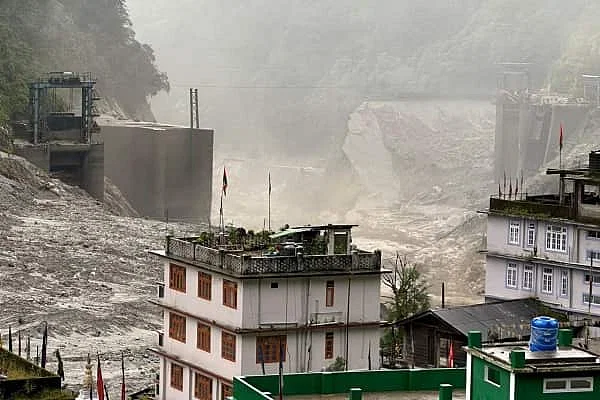The catastrophic incident involving the bursting of South Lhonak Lake in Sikkim, resulting in the loss of 14 lives and the destruction of a valuable hydroelectric project, has brought to the forefront the overlooked warnings of potential glacial lake outburst floods (GLOF) linked to climate change.
Scientists had been issuing warnings about the South Lhonak Lake and the broader risk of GLOFs for nearly two decades. In 2013, they had already raised alarm bells, identifying a “very high probability of sudden outburst” from the lake, which could lead to flash floods downstream. Even as far back as 2001, the Sikkim Human Development Report had spoken of the “catastrophic” impact of GLOFs and had highlighted the retreat of glaciers in the state.
GLOFs occur when lakes formed by melting glaciers suddenly burst open due to various factors, including excessive water accumulation from events like cloudbursts or triggers like earthquakes. This sudden release of an enormous volume of water causes flash floods downstream.
In recent years, the South Lhonak glacier had been rapidly retreating due to climate change and global warming. Between 1962 and 2008, it receded by 1.9 to 2 km, and in the following 11 years, it retreated an additional 400 meters. This melting of the glacier significantly increased the amount of water in the lake.
The South Lhonak Lake, located at an elevation of 17,100 feet, was fed not only by the South Lhonak glacier but also by glacial run-off from the retreating North Lhonak glacier and the main Lhonak glacier. This expansion of water sources led to an increase in the lake’s surface area by 500 meters and its average depth by 50 meters, according to Dr. SN Remya, the lead scientist behind the 2013 study.
These scientists had predicted a 42 percent probability of the South Lhonak glacier bursting and warned of the release of up to 19 million cubic meters of water, recommending the establishment of early warning systems.
In 2021, another study highlighted the “accelerated growth” of glacial lakes in Sikkim and the South Lhonak glacier’s continued retreat, making it the largest and fastest-growing glacial lake in the state. This study predicted peak discharge rates of up to 4,300 cubic meters per second for certain breach depths, raising serious concerns about downstream hazards, particularly in densely populated areas.
The tragic flash flood in Sikkim not only devastated lives and infrastructure but also underscored the importance of heeding scientific warnings. Although some preventive measures were taken, including the siphoning of excess water from South Lhonak Lake and plans for early warning systems, the sudden cloudburst outpaced these efforts.
Sikkim is home to around 300 glacial lakes in high-altitude areas, and at least 10 are believed to be vulnerable to GLOF events. Implementing early warning systems and taking proactive measures to address climate change impacts are critical steps in averting such disasters in the future.











